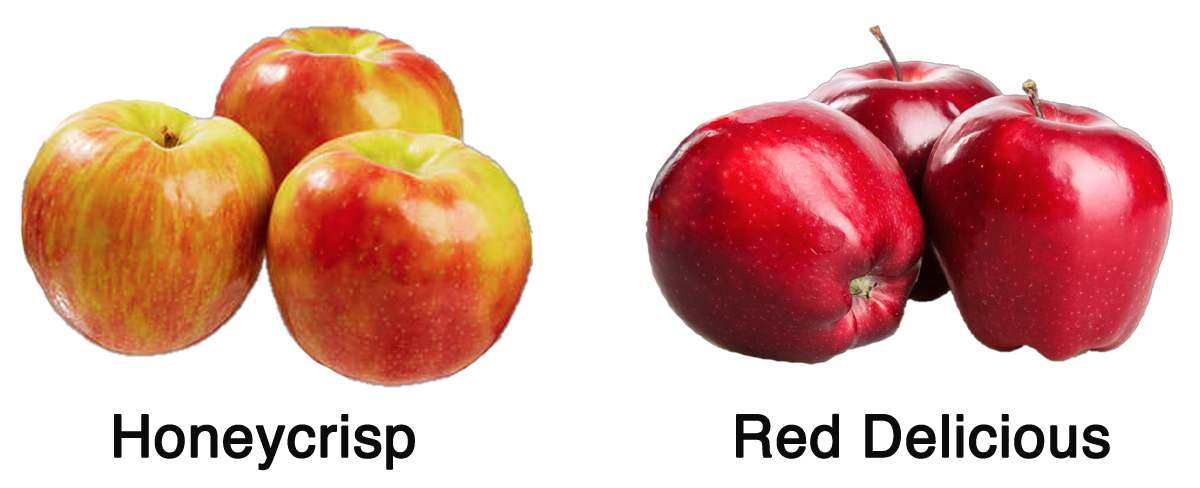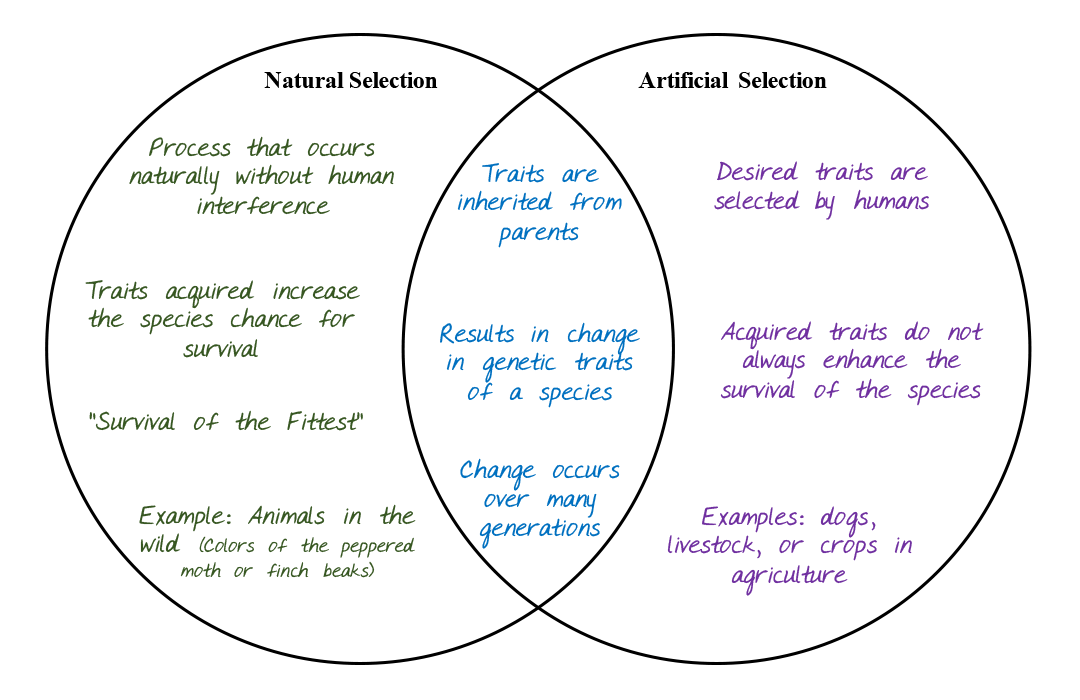Background Agricultural Connections
Species of plants and animals change through time. This evolutionary process can occur as a result of mutation, migration, or genetic drift. However, natural selection is the most probable and accepted cause of evolution. Natural selection can also be known as "survival of the fittest." In other words, the fittest organism in every situation (weather, temperature, protection from predators or disease, etc.) is most likely to survive and pass its genetic traits to the next generation. Artificial selection (or selective breeding), results in changes over time as well, but rather than nature choosing the desirable characteristics, humans do.
The only apples that are native to the United States are crab apples. Apples originated in the Old World and were brought to the Americas as part of the Columbian Exchange. Thousands of varieties of apple exist, though only a handful are likely to be familiar to most consumers.
Washington, New York, and Michigan are the top apple producing states in America. Although apples are grown in almost every state, not every state produces apples on a commercial level. Apple trees require an annual cold period in order to set fruit and produce a viable crop. Therefore, states with a year-round warm climate are not suited for apple production. Apple trees are propagated by cuttings, a method of asexual reproduction. This allows apple producers to make every Granny Smith apple look and taste the same, since each new tree is produced from a cutting, or clone of the previous. New and improved apple varieties may be developed by propagating apple trees from seed in order to produce an offspring that is genetically different than the parent plants (sexual reproduction). Once a desirable variety is developed through crossbreeding, the tree is propagated by cuttings to produce a uniform crop of apples.
Apples offer an authentic learning connection into scientific concepts, such as investigating states or phases of matter (applesauce), exploring methods of plant propagation (grafting), discovering applications of plant breeding techniques, understanding genetics and heredity, and biotechnology. In this lesson, students will rotate between five stations that introduce them to these scientific connections.
 |
This lesson could be used to introduce a phenomena storyline to investigate several questions (episodes) in relation to apples and science phenomena. For example: Why do apples brown? Why do apple farmers use grafting to propagate new trees? How does every [Granny Smith] apple look and taste the same? etc. For more information about phenomena storylines visit nextgenstorylines.org. |

